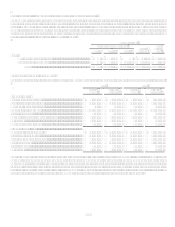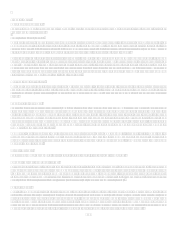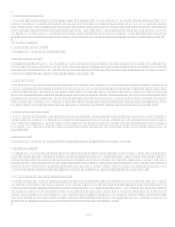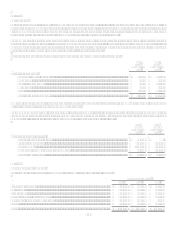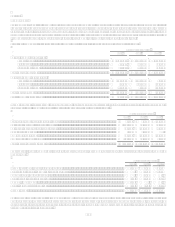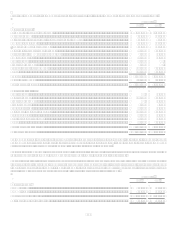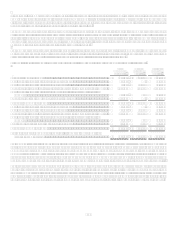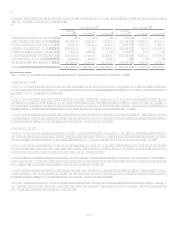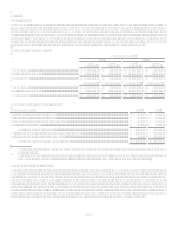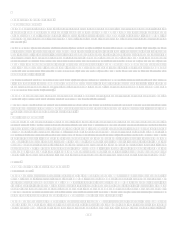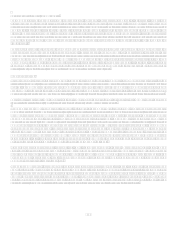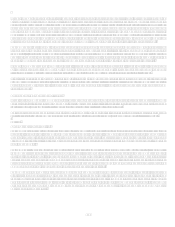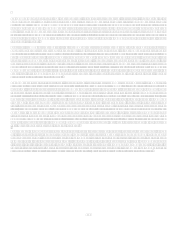Capital One 2008 Annual Report Download - page 154
Download and view the complete annual report
Please find page 154 of the 2008 Capital One annual report below. You can navigate through the pages in the report by either clicking on the pages listed below, or by using the keyword search tool below to find specific information within the annual report.136
As of December 31, 2008, U.S. income taxes and foreign withholding taxes have not been provided on approximately $266.7 million
of unremitted earnings of subsidiaries operating outside the U.S., in accordance with APB Opinion No. 23, Accounting for Income
TaxesSpecial Areas. These earnings are considered by management to be invested indefinitely. Upon repatriation of these earnings,
the Company could be subject to both U.S. income taxes (subject to possible adjustment for foreign tax credits) and withholding taxes
payable to various foreign countries. Determination of the amount of unrecognized deferred U.S. income tax liability and foreign
withholding tax on these unremitted earnings is not practicable at this time because such liability is dependent upon circumstances
existing if and when remittance occurs.
As of December 31, 2008, U.S. income taxes have not been provided for approximately $276.0 million of previously acquired thrift
bad debt reserves created for tax purposes as of December 31, 1987. These amounts, acquired as a result of the merger with North
Fork Bancorporation, Inc., are subject to recapture in the unlikely event that CONA, as successor to North Fork Bank, makes
distributions in excess of earnings and profits, redeems its stock, or liquidates.
Note 17
Derivative Instruments and Hedging Activities
The Company maintains a risk management strategy that incorporates the use of derivative instruments to minimize significant
unplanned fluctuations in earnings caused by interest rate and foreign exchange rate volatility. The Companys goal is to manage
sensitivity to changes in rates by hedging the repricing or maturity characteristics of certain balance sheet assets and liabilities, thereby
limiting the impact on earnings. By using derivative instruments, the Company is exposed to credit and market risk on those derivative
positions. The Company manages the market risk associated with interest rate and foreign exchange contracts by establishing and
monitoring limits as to the types and degree of risk that may be undertaken. Credit risk is equal to the extent of the fair value gain in a
derivative, if the counterparty fails to perform. When the fair value of a derivative contract is positive, this generally indicates that the
counterparty owes the Company, and, therefore, creates a repayment risk for the Company. When the fair value of a derivative
contract is negative, the Company owes the counterparty, and therefore, has no repayment risk. The Company minimizes the credit (or
repayment) risk in derivative instruments by entering into transactions with high-quality counterparties that are reviewed periodically
by the Companys Asset and Liability Committee, a committee of Senior Management. The Company also maintains a policy of
requiring that all derivative contracts be governed by an International Swaps and Derivatives Association Master Agreement;
depending on the nature of the derivative transaction, bilateral collateral agreements may be required as well.
The Company uses interest rate swaps as part of its interest rate risk management strategy. Interest rate swaps generally involve the
exchange of fixed and variable rate interest payments between two parties, based on a common notional principal amount and maturity
date. As a result of interest rate fluctuations, hedged assets and liabilities will appreciate or depreciate in market value. To the extent
that there is a high degree of correlation between the hedged asset or liability and the derivative instrument, the income or loss
generated will generally offset the effect of this unrealized appreciation or depreciation.
The Companys foreign currency denominated assets and liabilities expose it to foreign currency exchange risk. The Company enters
into various foreign exchange derivative contracts for managing foreign currency exchange risk. Changes in the fair value of the
derivative instrument effectively offset the related foreign exchange gains or losses on the items to which they are designated.
The Company has non-trading and trading derivatives that do not qualify as hedges. These derivatives are carried at fair value and
changes in value are included in current earnings.
The Asset and Liability Management Committee, as part of that committees oversight of the Companys asset/liability and treasury
functions, monitors the Companys derivative activities. In accordance with the Companys asset/liability management policies, the
Company reviews its risk profile on a monthly basis. The Companys Asset and Liability Management Committee is responsible for
approving hedging strategies. The resulting strategies are then incorporated into the Companys overall interest rate risk management
strategies.




